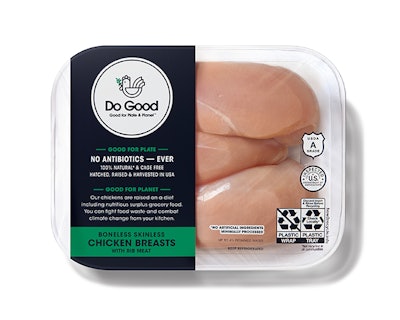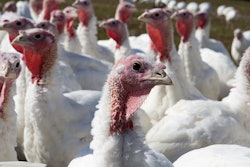
Carbon reduced chicken fed a nutrient-dense upcycled diet saved more than 10 million pounds of food waste from landfills over the past 6 months, Do Good Chicken reported.
“We believe upcycling is the food system of the future, and we launched Do Good Chicken to be a part of the solution to grocery store food waste and make a positive impact on the planet, right now,” said Justin Kamine, co-founder and co-CEO of Do Good Foods, parent company of Do Good Chicken.
Do Good Chicken is fed a diet made from upcycled surplus food from grocery stores. Each chicken product prevents four pounds of food waste from being sent to a landfill and avoids the generation of approximately three pounds of greenhouse gases, the company said.
“What we do is collect nutritious surplus food such as fruits, vegetables, bakery and meats – after the supermarket has made all of its food donations to people - and upcycle it into the next best use which is animal feed,” Kamine told WATTPoultry in 2021.
Do Good Chicken expands across U.S. retail
Do Good Foods first launched launched Do Good Chicken to retail stores in Philadelphia in May 2022 and has since expanded to major grocery chains in the northeast, mid-Atlantic and major markets such as Dallas and Denver.
It is available in boneless and skinless breasts, drumsticks, tenderloins, thighs, wingettes and drummettes. Do Good Chicken does not contain any artificial ingredients, antibiotics, hormones or steroids.
“The good news is that people want to help find solutions to the climate crisis we are facing and are motivated to act. Personal actions to reduce food waste like composting, mindful food planning and eating leftovers are all excellent behaviors consumers can be taking, but fighting food waste shouldn’t have to fall solely on their shoulders,” Kamine added.
“We started this brand to evolve the current food system – from food production to retailers – to start implementing solutions into products before they even get to a family’s home.”
The total amount of food waste created annually per U.S. household is 70 million tons, approximately 250 pounds per person. This waste is the single largest contributor to landfills today. Grocery stores generate nearly one-quarter of the food waste in the country.
Food waste can cause increases in energy and water usage, soil erosion, greenhouse gases, environmental and health concerns and excess use of natural resources such as packaging and shipping.
The first Do Good Foods production facility, located in Fairless Hills, Pennsylvania, can convert 60,000 tons of surplus food each year, which could feed 25 million chickens. A second animal feed production facility is set to open in Fort Wayne, Indiana, by the end of 2024.


















